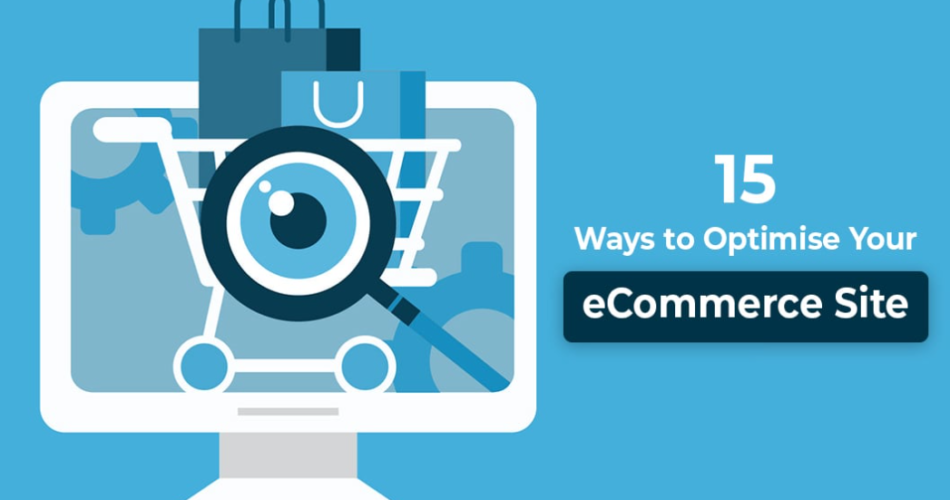Search Engine Optimization (SEO) is a critical component of any successful e-commerce seo strategy. With millions of online stores competing for attention, optimizing your e-commerce website for search engines like Google is essential to drive organic traffic, increase sales, and grow your business. In this detailed guide, we’ll explore the best practices for e-commerce SEO, structured in a way that aligns with Google’s preferences for high-quality, user-focused content.
Contents
- 1 1. Why SEO is Crucial for E-Commerce
- 2 2. How Google Ranks E-Commerce Websites
- 3 3. Key E-Commerce SEO Strategies
- 4 4. Advanced E-Commerce SEO Tactics
- 5 5. Measuring and Improving Your E-Commerce SEO
- 6 6. Common E-Commerce SEO Mistakes to Avoid
- 7 7. Conclusion
1. Why SEO is Crucial for E-Commerce

seo for e-commerce
The Importance of Organic Traffic
Organic search traffic is one of the most valuable sources of visitors for e-commerce websites. Unlike paid ads, organic traffic is free and tends to have higher conversion rates because users are actively searching for products or solutions.
Competitive Advantage
E-commerce is a highly competitive space. Proper SEO helps your website rank higher in search engine results pages (SERPs), making it easier for potential customers to find your products over competitors.
Long-Term Growth
SEO is a long-term investment. While it takes time to see results, a well-optimized e-commerce site can generate consistent traffic and revenue for years to come.
2. How Google Ranks E-Commerce Websites
Google’s ranking algorithm prioritizes websites that provide the best user experience, relevance, and authority. Here are the key factors Google considers for e-commerce SEO:
- Relevance: Does your website match the user’s search intent?
- Content Quality: Is your content informative, unique, and valuable?
- User Experience: Is your site easy to navigate, fast, and mobile-friendly?
- Technical SEO: Is your website technically sound and free of errors?
- Backlinks: Do other reputable websites link to your site?
3. Key E-Commerce SEO Strategies
A. Keyword Research
Keyword research is the foundation of any SEO strategy. For e-commerce, focus on:
- Product Keywords: Target specific product names and models (e.g., “wireless noise-canceling headphones”).
- Long-Tail Keywords: These are more specific and less competitive (e.g., “best wireless headphones for running”).
- Buyer Intent Keywords: Focus on keywords that indicate purchase intent (e.g., “buy iPhone 14 online”).
Tools to Use: Google Keyword Planner, Ahrefs, SEMrush, or Ubersuggest.
B. On-Page SEO
Optimize individual product and category pages to improve their visibility in search results.
-
Title Tags:
- Include primary keywords.
- Keep it under 60 characters.
- Example: “Wireless Noise-Canceling Headphones | Brand Name.”
-
Meta Descriptions:
- Write compelling descriptions with keywords.
- Keep it under 160 characters.
- Example: “Shop the best wireless noise-canceling headphones at Brand Name. Free shipping and 30-day returns.”
-
URL Structure:
- Use short, descriptive URLs with keywords.
- Example:
www.example.com/wireless-headphones.
-
Header Tags (H1, H2, H3):
- Use H1 for the main title and H2/H3 for subheadings.
- Example: H1: “Wireless Headphones,” H2: “Features,” H3: “Noise-Canceling Technology.”
-
Image Optimization:
- Use descriptive file names (e.g.,
wireless-headphones.jpg). - Add alt text with keywords (e.g., “wireless noise-canceling headphones”).
- Compress images to improve page speed.
- Use descriptive file names (e.g.,
-
Internal Linking:
- Link to related products or categories to improve navigation and SEO.
C. Content Marketing
High-quality content can drive traffic and establish your authority in your niche.
-
Product Descriptions:
- Write unique, detailed, and engaging descriptions for each product.
- Highlight features, benefits, and use cases.
-
Blog Content:
- Create blog posts that address customer pain points or interests.
- Example: “Top 10 Wireless Headphones for 2025” or “How to Choose the Best Headphones for Running.”
-
Buyer Guides and Tutorials:
- Provide value-added content like buying guides, how-to articles, and video tutorials.
D. Technical SEO
Technical SEO ensures your website is crawlable, indexable, and free of errors.
-
Mobile-Friendliness:
- Ensure your site is responsive and works seamlessly on all devices.
- Use Google’s Mobile-Friendly Test tool to check.
-
Page Speed:
- Optimize loading times by compressing images, using a Content Delivery Network (CDN), and minimizing code.
- Aim for a loading time of under 3 seconds.
-
Structured Data:
- Implement schema markup (e.g., product schema) to help Google understand your content.
- Example: Add product price, availability, and reviews to your schema.
-
XML Sitemap:
- Create and submit an XML sitemap to Google Search Console to ensure all pages are indexed.
-
Fix Broken Links:
- Regularly check for and fix broken links or redirects.
E. User Experience (UX)
Google prioritizes websites that offer a great user experience.
-
- Use clear categories, filters, and search functionality.
- Example: “Headphones > Wireless > Noise-Canceling.”
-
Secure Website:
- Use HTTPS to protect user data and build trust.
-
Customer Reviews:
- Display product reviews to build credibility and improve SEO.
F. Link Building
Backlinks are a key ranking factor. Focus on:
- Guest Blogging: Write articles for reputable websites in your niche.
- Influencer Collaborations: Partner with influencers to promote your products.
- Product Reviews: Send free samples to bloggers for reviews.
4. Advanced E-Commerce SEO Tactics
A. Optimize for Voice Search
With the rise of voice assistants like Alexa and Google Assistant, optimize for conversational queries (e.g., “Where can I buy wireless headphones near me?”).
B. Local SEO
If you have a physical store, optimize for local search:
- Create a Google My Business profile.
- Target location-based keywords (e.g., “headphones store in New York”).
C. Seasonal SEO
Leverage seasonal trends by creating content and promotions around holidays or events (e.g., “Black Friday Headphone Deals”).
5. Measuring and Improving Your E-Commerce SEO
Key Metrics to Track
- Organic traffic (Google Analytics).
- Keyword rankings (Ahrefs, SEMrush).
- Conversion rates.
- Bounce rate and time on site.
Tools to Use
- Google Analytics.
- Google Search Console.
- Ahrefs, SEMrush, or Moz.
Continuous Improvement
- Regularly update your content.
- Monitor competitors and adapt your strategy.
- Stay updated with Google’s algorithm changes.
6. Common E-Commerce SEO Mistakes to Avoid
- Duplicate Content: Avoid copying product descriptions from manufacturers.
- Ignoring Mobile Optimization: Mobile users make up a significant portion of e-commerce traffic.
- Slow Page Speed: Slow-loading pages lead to higher bounce rates.
- Poor Navigation: Confusing site structures frustrate users and hurt SEO.
- Neglecting Analytics: Failing to track performance means missing opportunities for improvement.
7. Conclusion
SEO is a powerful tool for e-commerce businesses looking to increase visibility, attract more customers, and drive sales. By focusing on keyword research, on-page optimization, technical SEO, content marketing, and user experience, you can create a website that ranks well on Google and delivers a seamless shopping experience.
Remember, SEO is an ongoing process. Regularly analyze your performance, adapt to changes, and stay ahead of the competition. With the right strategy, your e-commerce store can achieve long-term success in the digital marketplace.
